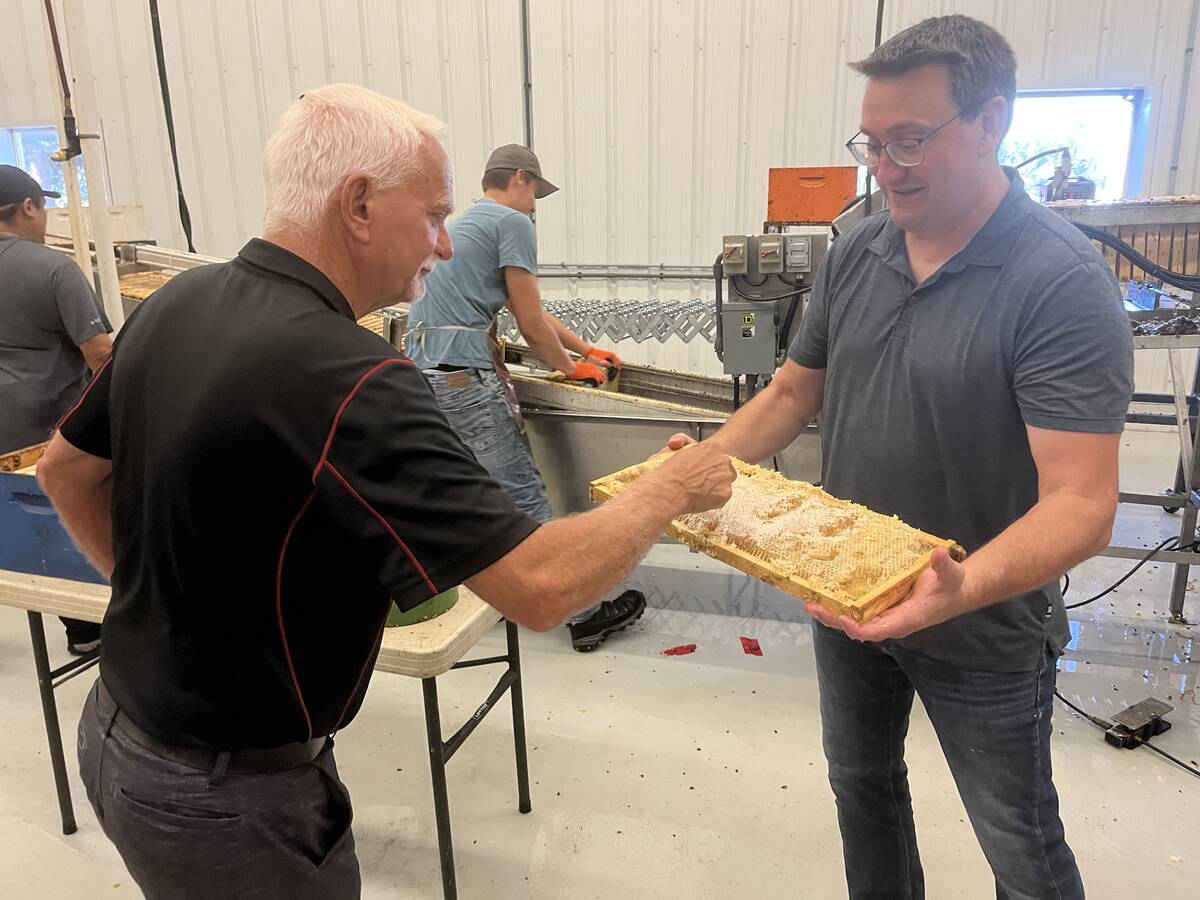A long-time Western Producer reader, well known within the agricultural community, recently telephoned me and thanked me for these columns. It was nice to chat about agriculture in general and this column in particular.
He indicated a neighbour was having trouble with the adjoining yard owner’s overgrown tree hanging over into the next yard. The owner refused to do anything about it and a dispute was arising.
The caller wondered what the laws were and whether there had been any lawsuits over such issues.
Read Also

Alberta honey business ‘thrives’ despite bumpy beginnings
Thrive Honey showcases its honey production in market where Alberta produces 40 per cent of all honey produced in the country
Even rural municipalities have ordinances on the books about such issues. If there is a recreational lake within the municipal district, chances are there are restrictions on building or even altering tree lines and shorelines.
There is a huge amount of variation in these laws. Call your local building department or administrator for detailed information.
Also check provincial laws where you live because some provinces have restrictions on pruning trees and managing such growth. There are different considerations if the tree is on private or government-owned land.
In addition to these legal checks, there are some practical tips that will keep you out of trouble.
If the branches are overhanging your property, you are free to trim them, provided you act reasonably. Don’t go onto your neighbour’s land to do the trimming.
Also, you have to cut it and protect the limbs so that the tree itself is not damaged. Remember, it’s not your property and you must ensure that it doesn’t die.
Hiring an expert to do the pruning is a good idea. Even if the tree is severely damaged or dies, you may have some recourse against the pruning company.
I would discuss it with your neighbour first to see if you can come to an agreement. That old saying “good fences make good neighbours” is often true, but so do good discussions.
There is a 1998 Saskatchewan case that illustrates what happens when there is a lack of communication.
A 30- to 40-year-old Manitoba maple tree straddled two adjoining lots in Saskatoon. Both owners claimed they owned the tree, but neither could prove it.
One neighbour thought the tree looked sick and hired a crew to cut and remove it without asking the other neighbour.
The other neighbour sued and won the case. The judge held there is a distinction between trees.
A border tree grows primarily on one side of a property line and overhangs another property. A straddle tree, the subject of this case, grows directly on the property line and ownership of it is likely shared.
The judge found that a property owner is legally entitled without notice to cut those branches and roots of a neighbour’s bordering tree that extends over onto his property or air space, even when such actions might kill the tree.
The law is not so clear for straddle trees. Who planted the tree and whether it was intended to be on the border or just grew that way are considerations. Each case depends on its peculiar facts.
The damage award is worth noting. The judge gave $642 for planting a smaller replacement tree plus $900 for the loss of shade and enjoyment.
Other judges have awarded much higher sums, saying the offending party had to replace the big tree lost. Awards have reached into the tens of thousands of dollars.
In short, proceeding with caution is the right thing to do in this situation.
Do your best to communicate with your neighbour, and if this is impossible, get a survey done to see what type of tree, legally speaking, it is. Hire experts and document everything.
Rick Danyliuk is a lawyer with McDougall Gauley LLP in Saskatoon.
















